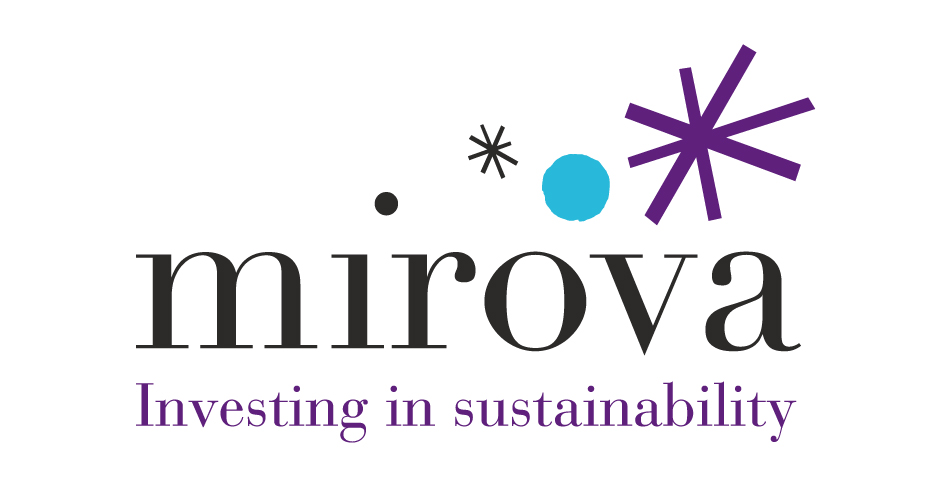A committed player and a leading player in sustainable finance, Mirova is a conviction-based management company that offers its clients investment solutions combining the search for financial performance with environmental and social impact. This is our raison d'être: to contribute to a more sustainable and inclusive economy by increasing our positive impact on environmental issues, but also on reducing inequalities.
As ‘Mission-led company’, thanks to multidisciplinary teams united around the same vision, the variety of our areas of expertise, and our ability to innovate and create partnerships with the best experts, we seek to direct capital towards the needs of investment in a real, sustainable and value-creating economy.
Our internationally recognised BCorp certification attests to our environmental and social commitment.
Members:
Resources
Displaying 1 - 3 of 3Land Degradation Neutrality (LDN) Fund. An innovative impact investment fund for sustainable land use, with a linked TA Facility
The challenge of land degradation Sustainable land use is closely connected with many sustainable development objectives Land Degradation Neutrality (LDN). It is estimated that two billion hectares of land is degraded worldwide, and we continue to degrade another 12 million hectares of productive land every year. According to the 2018 World Atlas of Desertification produced by the European Commission’s Joint Research Centre, 75% of the Earth’s land area is already degraded, and over 90% could become degraded by 2050.
Land Degradation Neutrality Fund : An Innovative Investment Fund Project
Two billion hectares of productive land are degraded worldwide. This is an area larger than South America or twice the size of China, and 500 million hectares of this is abandoned agricultural land. We continue to degrade another 12 million hectares of productive land every year. We need to break this destructive cycle because the benefits of preventing land degradation and reversing it are far greater than the gains from degrading new land year after year.
Restoring African degraded landscapes with plant biodiversity and livestock management
General
Across Sub-Saharan Africa (SSA) approximately 660 million hectares of land is degraded, leading to low land productivity, poor and variable biomass production, inability to graze livestock and lack of resilience of agriculture to climate extremes. Land degradation is a major factor in the instability of crop and livestock production, leading to a significant burden of food and income security. Extensive forest areas of East Africa have been converted to grasslands and to agriculture, largely driven by the expansion of crop-livestock farming, a preferred livelihood option in these regions to minimize the impacts of climatic risks. Once land is converted for agriculture, a combination of low input of nutrients and high grazing pressure, with social and climatic changes leads to this land becoming degraded. Once degraded is it extremely difficult to recover the functionality of the land leading to a downward spiral of productivity and resulting in systems that are less resilient to climate extremes. Local farmers, who rely on livestock for their livelihoods, seek new land for grazing within natural ecosystems. As a consequence, high livestock densities have led to larger loads of nutrients and sediments entering water systems and are releasing greater emissions of harmful greenhouse gases. Land restoration must be a priority if we are to secure future food supplies, and protect high carbon and high biodiversity ecosystems across East Africa. This project seeks to explore the use of a novel combination of different local grassland plants species, coupled with new livestock management models to help farming communities in Kenya to recover degraded grazing lands. Working in partnership with local farmers and community based organisations, the project team aims to improve grassland productivity, thereby increasing the quality of livestock fodder, and nutrient content of manure. This will lead to restored functionality of soils for future plant production and a greater degree of resilience to future climate shocks. Specifically, this interdisciplinary project will use a multi-scale approach to: 1) Study the primary productivity and state of degradation of land at two contrasting sites of the densely populated highlands of Kenya; 2) Explore the biological and socio-ecological characteristics of these different sites and use complimentary field and plot scale studies to identify the mechanisms involved in a process of successful restoration using plant biodiversity and; 3) Explore alternative management and regulatory scenarios with local farmers and stakeholders, highlighting the benefits for livestock production and for ecosystem conservation. 4) Engage key stakeholders to understand restoration needs and constraints and to build the necessary capacity Halting and reversing land degradation in Africa is urgent given the projections of human population increase, the large proportion of the African population living in a rural setting, and the prominence of agriculture as a source of income across the continent. Single interventions such as increasing mineral fertiliser use or the supplementation of livestock feeds are unlikely to be sufficient to achieve nutritional security given the large scale of the problem, and the increases in productivity and new land that may be required. Protecting natural ecosystems such as forests and grasslands, and restoring soil resilience is also needed to reduce negative feedbacks on the regional climate system including livestock production of greenhouse gases and buffering negative impacts of climate change on the water cycle.
Objectives
The Global Challenges Research Fund (GCRF) supports cutting-edge research to address challenges faced by developing countries. The fund addresses the UN sustainable development goals. It aims to maximise the impact of research and innovation to improve lives and opportunity in the developing world. The fund addresses the UN sustainable development goals. It aims to maximise the impact of research and innovation to improve lives and opportunity in the developing world.



